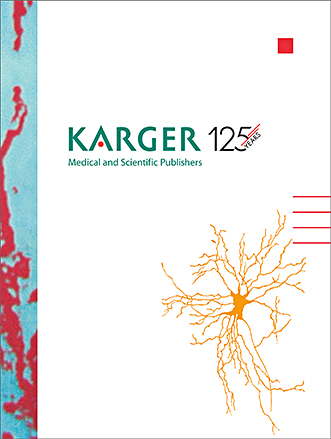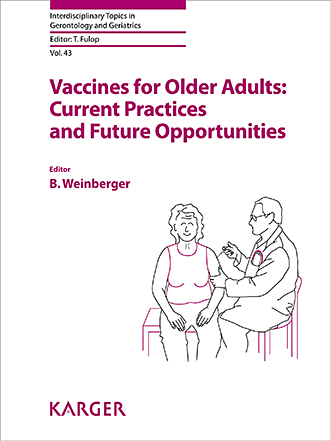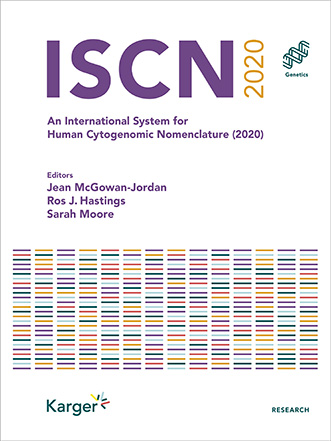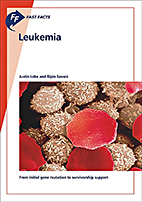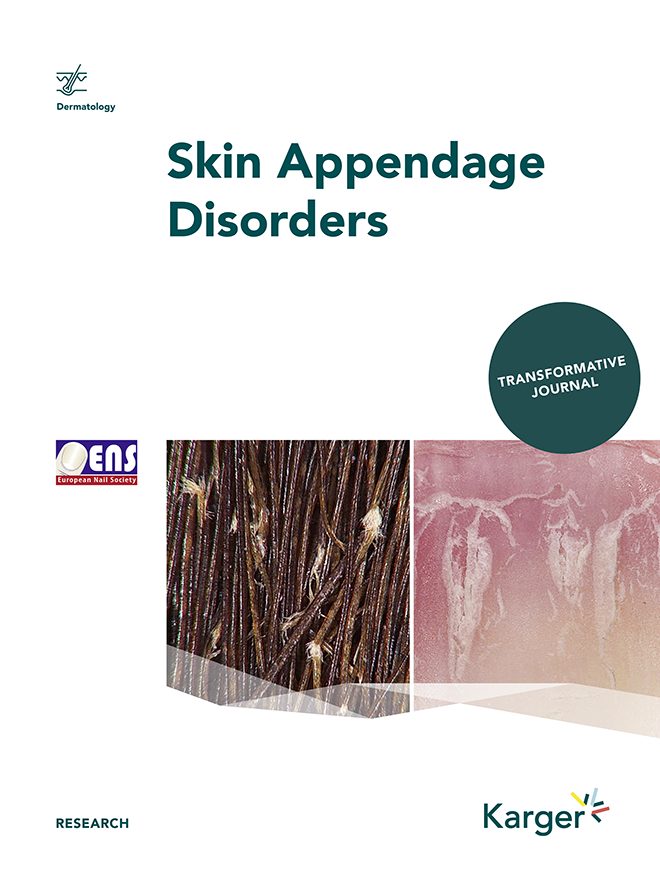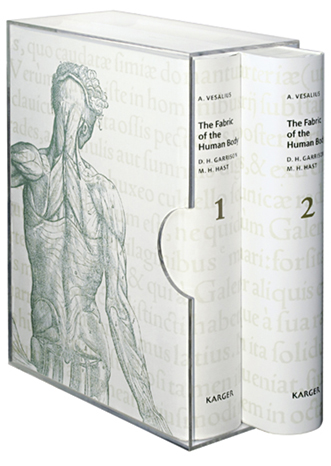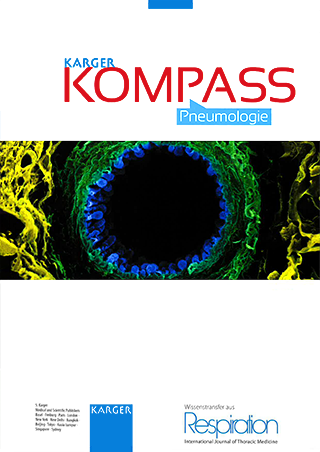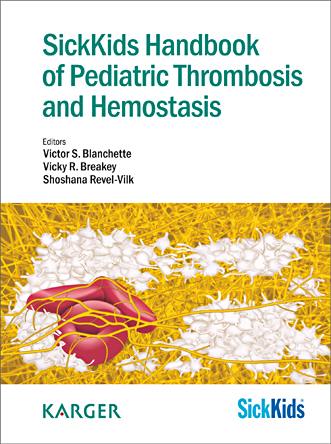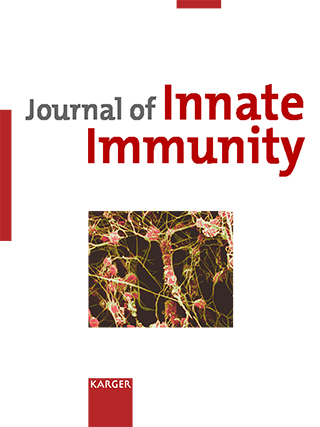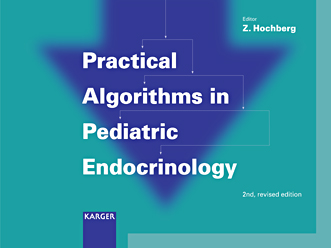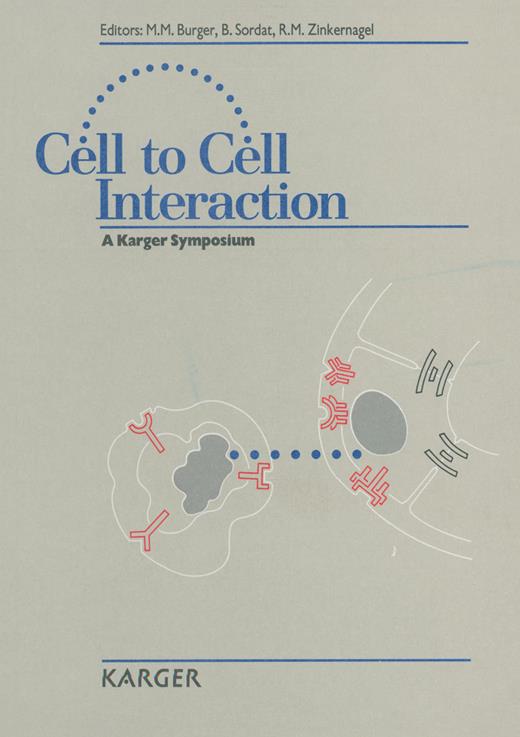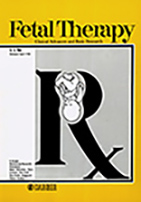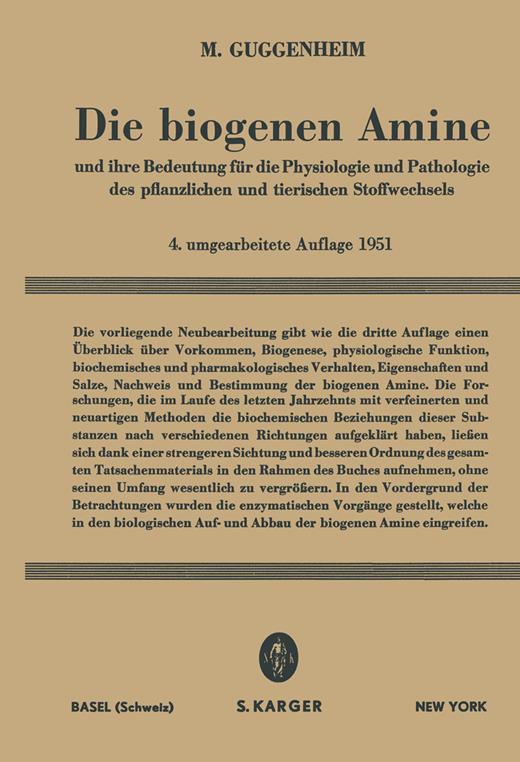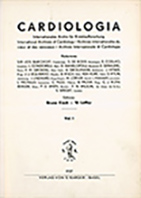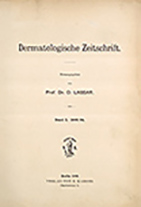History & Publishing Highlights
Take a guided tour through 130 years of medical and scientific publishing.
From Turning Medical Progress into Print to Connecting and Advancing Health Sciences
The five portraits below of the founder, his successors, and the current Chairwoman of the Board of Directors succinctly summarize the company's development over four generations from 1890 and the first book publication in Berlin, Germany to today's globally active publishing house in Basel, Switzerland, with a publishing program of 105 journals as well as 35 new book releases per year.
History of the Publisher Family
-
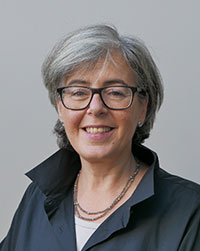
Gabriella Karger
In 1992, Steven Karger asked his youngest sister Gabriella Karger, born in 1964, to support him in relocating their German subsidiary from Munich to a new site in Freiburg i.Br., closer to the headquarters in Basel. She stayed on in Freiburg and later joined the Basel offices in various functions. She left the family business for an other medium, the Swiss National Radio. After several years as a member of Program Management for its cultural second channel, she re-joined her family's publishing company in 2007 as Managing Director. Taking over responsibilities during her brother's final illness, Gabriella Karger successfully guided the company through the difficult loss and was CEO from 2012 to 2017. She has served as the company's Chairwoman of the Board of Directors since 2018. In a 2015 interview, she outlines her views on publishing and her own role as a publisher in the 21st century: Managing Knowledge is Ever More Important -

Steven Karger
The eldest son of Thomas Karger, joined the family business in 1982. After studies in marketing and economics, Steven chose to learn and hone the skills of his trade directly on the job, first as an intern with other publishers, then as his fathers right hand, and later as managing director of the bookshop and agency Karger Libri as well as the German branch of the publishing business. As of July 1999, Steven was responsible for the day-to-day business of all Karger enterprises worldwide. Keenly interested in the new technologies and media, he was a key influence in the electronic/online development of the publishing house. Sadly, Steven Karger passed away much too early in 2008 (Obituary). -

Thomas Karger
When Heinz Karger suddenly died in 1959, his son Thomas Karger, born in 1930, took over the publishing house. He continued his father's style of maintaining close personal contacts with his authors and editors worldwide. It was his decision to make English the predominant language for Karger publications, and within ten years most journals had been given English titles. Under his direction, the company expanded internationally and by 1971 he had established distribution centers throughout the world. He also founded the international subscription agency Karger Libri (1960–2020) and the scientific bookshop (1967–2017). In recognition of his efforts on behalf of medical science, Thomas Karger has been awarded honorary doctor's degrees by the University of Hamburg in 1972 and the Medical Faculty of the University of Basel in 1993. Thomas Karger was a long-term Chairman of the Board of Directors and served as a member of the Board of Directors until his death on 7 June 2020 (Obituary). -

Heinz Karger
In the face of mounting political pressure, Heinz Karger relocated the company from Berlin to Basel, Switzerland in 1937. Having lost all German authors and editors due to a Nazi interdict, Heinz Karger decided to restructure his journals to meet the information needs of a European market: most journal titles were changed from German to Latin and carried reports in either German, English, French, or Italian with summaries in each of the other languages. During the war years, Karger continued to produce books and journals, even though their distribution had become nearly impossible. The publications were stored in the cellar below the offices and mailed out after the end of the war to grateful researchers all over the world. The post-war years saw unprecedented growth in the development of the medical sciences which was paralleled by a rapid increase in Karger's publication program. -

Samuel Karger
The family business was founded in 1890 in Berlin, Germany, when Samuel Karger, a young bookseller, decided to launch a publishing company devoted entirely to medicine and science. Recognizing the medical professionals' need for compact surveys of the state of the art of important fields Samuel Karger created a series of reviews. In 1890, the first manual entitled Geburtshülfliches Vademecum für Studirende und Aerzte, a pocket guide to obstetrics, proved an immediate and long lasting success.
Samuel Karger was also amongst the first to foresee the demand for specialized journals. The first Karger journal was founded in 1893: Dermatologische Zeitschrift. The company soon enjoyed a reputation for high technical production standards and published the works of eminent scientists such as Herman Oppenheim and Sigmund Freud. By 1930, Samuel Karger could list more than 850 titles that had been produced under his direction. At about this time, his son, Heinz Karger, began to co-manage the publishing house, which he took over after his father's death in 1935.
Publishing Highlights
Let us take you on a stroll through the history of Karger Publishers and introduce you to a very special collection of publications. They have been hand-picked to represent the history of the publishing house as well as to illustrate the development of medicine and its subspecialties over time. Admittedly, this selection is highly personal and thus quite subjective, however, we are certain that you will come across fascinating glimpses into the past or present you may have missed otherwise!
We are proud to say that all titles, with very few exceptions, are still available, many in their original first or a later print edition and most as e-books, thanks to our E-Book Archive Collection, also inaugurated in 2015. Purchase details can be found on the individual book home which includes access to the contents. Alternatively, contact front office, who will also be happy to find out for you if a specific old journal issue or any other treasure is still available from our archives.
Those who would like to delve a little deeper will find ample material in the richly-illustrated free Karger "Festschrift", which was brought up to date for the 125th anniversary. The Festsschrift is available as a hard cover book and as a free cover-to-cover PDF.
Let's begin the tour: Follow us on our leisurely walk through interesting times, fascinating topics and beautiful illustrations. Enjoy!
Jubliee Year 2015 Until Now
In 2015, Karger Publishers celebrated its 125-year anniversary. Building on this tradition, a new company strategy has been implemented since 2018, keeping pace with the current developments and shifts in research and publishing. Have a look at the regularly updated Book News to keep up-to-date on all new releases.
2021: The Orexin System. Basic Science and Role in Sleep Pathology
The series, Frontiers of Neurology and Neuroscience, has published important volumes on stroke, neurologic-psychiatric syndromes, as well as the history of neurological sciences. In 2021, Karger released its first native Open Access book which focused on sleep pathology. The book examined the intricate role of the orexin system in regulating sleep and wake, and its interaction with other wake-regulating systems.
2020: Vaccines for Older Adults: Current Practices and Future Opportunities
Conceived and written in 2018 and 2019, before the corona epidemic, this volume in the book series Interdisciplinary Topics in Gerontology and Geriatrics, captured the growing understanding of older adults’ health needs. Vaccinations were one area, and one that would become startlingly significant in 2020, but the book series and the Karger journal Gerontology has also addressed HIV in aging, the biological, clinical, and social implications of frailty in aging, and biological aging from a system biology perspective.
ISCN 2020
The publication constitutes an indispensable reference volume for human cytogeneticists, technicians, and students for the interpretation and communication of human cytogenetic nomenclature. Updated regularly by an expert committee, it has been published in collaboration with Cytogenetic and Genome Research since 1963. Successive editions account for changes in technologies, including changes in publishing technology. The 2020 edition embraced online capacities, allowing practitioners to access the text easier by search engine, displaying errata from editors online, and allowing the community to interact with the authors of ISCN in an online forum.
2019: Fast Facts: Leukemia
Fast Facts Leukemia was not the first Fast Facts book to be published, nor even the first Fast Facts to be published after Karger acquired the information service Health Press in 2018, but it is an excellent example for the series as is its revised and updated second edition. The Fast Facts series, now a collection of more than 100 resources, addresses knowledge gaps in healthcare enabling a dialogue between healthcare professionals, patients, and other. Karger has offered clinicians and patients unlimited free access to the collection since 2022.
2015: Kidney Diseases
One of Karger’s more recent new journals in nephrology, Kidney Diseases defined itself as a journal for research exchange between East and West. In its inaugural editorial it acknowledged “the glaring gaps and inequities in the diagnosis and treatment of kidney diseases […] both within and between countries” and set out to facilitate a more equitable global health world that recognized regional particularities in morbidity, mortality, and treatment. Other recent new journals in nephrology focused on the complex interplay of heart and kidneys and the specificities of glomerular diseases.
2015: Skin Appendage Disorders
In 2015, Karger launched Skin Appendage Disorders, the first journal exclusively dedicated to research and treatment of hair, nail, and skin gland diseases. Geared towards the needs of dermatologists, dermatological surgeons as well as cosmetic dermatologists it built on Karger’s successful and long-standing portfolio in dermatology, providing a much-needed journal of reference for the specialist field. In 2022, the journal became a Transformative Journal, a new model of publishing that is committed to converting to the Open Access model while maintaining publishing choices for authors.
Digitalization and the New Millennium: 1997–2014
Digitalization marked the beginning of a series of major changes in the publishing industry which influenced all areas of the business – from processess and systems to topics such as discoverability, usage, and accessibility.
The Open Access movement – the demand for unrestricted information to scientific information on the internet - has been changing the business model of publishers for many years now.
2014: Vesalius: The Fabric of the Human Body
Published in time for Vesalius' 500th anniversary, this annotated translation of the 1543 and 1555 editions of 'De Humani Corporis Fabrica Libri Septem' proudly celebrated traditional and modern publishing skills. Annotations provide insights just how innovative De humani corporis fabrica was, and high-resolution digital scans of the almost 300 woodcuts grant the images a sharpness they never had before. It stands along contemporary atlas projects while also epitomizing the long-standing dedication to medical history at Karger.
2013: Kompass Pneumologie
In 2013, Karger launched Kompass Pneumologie, instituting a new type of journals. In the Kompass journals expert committees select and summarize published articles, identifying the relevance of these particular articles to clinical practice and elucidating the study, its strengths and weaknesses. Since 2013, Karger has established Kompass titles in oncology, dermatology, and ophthalmology, as well as an English-language Kompass Nutrition and the Spanish-language Kompass Neumologia. Kompass journals provide an important contribution to knowledge transfer from medical research to medical practice.
2013: SickKids Handbook of Pediatric Thrombosis and Hemostasis
This much-acclaimed handbook showcases the effective cooperation between Karger and the highly-respected Hospital for Sick Children in Toronto. Written by former and current SickKids fellows, the publication elucidated the field of inherited and acquired bleeding and clotting disorders in children, providing practical, evidence-based information for clinical assessment and management. The book appeared in print and online. It offered an online tool providing readers the opportunity to give feedback and interact with the editorial team, highlighting the opportunities of new publishing formats.
2009: Journal of Innate Immunity
Founded in 2009, the Journal of Innate Immunity set out to capitalize on a decade of interest in innate immunity. Its founding was timely: Bruce Beutler and Jules Hoffmann, who wrote an editorial in the inaugural issue, would receive the Nobel Prize in Physiology two years later. Ten years later, the editors reflected that the journal provided a broad scope from invertebrate immunity, to innate recognition, cell biology, and complex human diseases. They, moreover, embraced the opportunity to become an open access journal in order to reflect the evolution in the field.
2007: Using and Understanding Medical Statistics
The textbook had been updated regularly since its first edition in 1985, but the revised fourth edition illuminated the rising significance of medical statistics. Whether in evidence-based medicine, clinical trials, epidemiological studies, or research articles, it had become increasingly important for researchers, clinicians, and students to understand and critically assess statistical information. By the fifth edition, published in 2015, the book included code from the open-source statistical package, R, “allowing [the editors] to de-emphasize formulae and calculations, and let the software do all the ‘heavy lifting’ ”, as the preface stated.
2007: Practical Algorithms in Pediatric Endocrinology
The handbook for general practitioners set a new standard in 1999, breaking longer lists and tables of differential diagnosis into smaller, manageable ones. The second edition argued that it provided “a logical, concise, and cost-effective approach to medical reasoning” to avoid excessive, unnecessary procedures (2007). A third edition followed in 2017 alongside related titles in pediatric hematology and oncology, nephrology (2008) and gastroenterology (2014). These too were intended to be pragmatic tools for clinicians at the bedside.
Relocation to Basel and Internationalization: 1937–1996
In the face of mounting political pressure, the company relocated from Berlin to Basel, Switzerland in 1937. Most journal titles were changed from German to Latin and carried reports in either German, English, French, or Italian with summaries in each of the other languages.
In the post-war years, Karger's publication program grew rapidly. English became the predominant language for Karger publications. The company expanded internationally and established distribution centers throughout the world.
1990: Cell to Cell Interaction
Cell to Cell Interaction was the first scientific symposium sponsored by Karger. It celebrated Karger’s centenary. Speakers presented the latest research findings in neurobiology, oncology, and immunology, discussing current data on cell adhesion molecules, immunoglobulins, homing receptors, and cytokines, then a fast-expanding area of research. The rapid publication of the proceedings “illustrate[d] that the effective cooperation between editors, speakers, and the publisher can make topical scientific information quickly available”, Steven and Thomas Karger wrote.
1986: Fetal Therapy
From the 1960s, new imaging techniques, diagnostic methods, surgical tools, and modes of intensive care expanded the field of intrauterine treatments, “giving rise to a relatively new concept in medicine; the fetus as a patient”. The editorial of the newly established journal, Fetal Therapy, argued that the field required a forum for the rapid exchange of information among those with a common interest but diverse professional backgrounds to advance. Today, the journal, known as Fetal Diagnosis and Treatment, continues to focus on clinical fetal medicine with contributions from experimental medicine or the basic sciences.
1952: International Congress for Allergy
The newly founded International Association of Allergists (IAA) organized its first congress in Zurich in 1951, bringing together 570 attendees from 39 countries including delegates from 28 national societies to discuss allergic conditions and sensitivities. Karger published the resultant 1’200-page volume of proceedings as well as the IAA’s recently founded journal International Archives of Allergy and Applied Immunology. The concatenation of association, conference, and journal illustrate the post-war internationalization of medicine and its networks.
1940: Die biogenen Amine und ihre Bedeutung für die Physiologie und Pathologie des pflanzlichen und tierischen Stoffwechsels
Guggenheim was one of Karger’s first Basel-based authors. In 1940, Karger published the 3rd edition, a decade later the 4th edition of his monograph, in which he discussed the prevalence, physiological function, and biochemical and pharmacological characteristics of histamine and other biogenic amines. At the time head of research at Hoffmann-La Roche, Guggenheim was instrumental in orchestrating the financial support from the local chemical industry that enabled Karger to continue to publish throughout the war years.
1937: Cardiologia
Cardiology, as the journal has been known since 1970, was the first Karger journal founded in Basel after the company had to relocate. The new journal had an international editorial board with Editors-in-Chief based in Zurich and Cologne (soon, New York). It accepted papers in German, French, Italian, and English and summarized each article in all four languages. This international outlook served as a model for many new journals and the repositioning of existing journals. Dermatologische Zeitschrift therefore became Dermatologica in 1939.
The Early Years in Berlin: 1890–1937
Founded in 1890 in Berlin, Germany, the publishing company has been devoted entirely to medicine and science. Recognizing the medical professionals' need for compact surveys of the state of the art of important fields, reviews and specialized journals were launched.
1905: Ärztliche Taktik: Briefe an einen jungen Arzt
Framed as a letter to a young physician, the slim volume elaborated on the importance of the doctor-patient relationship for a successful clinical practice. A century later, its emphasis on patient-oriented care is still a key tenet. Schlesinger’s insistence, for instance, that patients had a right to know their diagnosis and that doctors should share their uncertainties of diagnosis, continue to resonate. The book was one of several devoted to the specificities of clinical practice, including how to set up x-ray machines in a doctor’s office.
1897: Wesen, Ursache und Behandlung der Zuckerkrankheit
This book examines the nature, cause, and treatment of diabetes, marking the beginning of Karger’s publication program in metabolic diseases and endocrinology. Like the handbooks and journals, this monograph aimed to bring together medical theory and clinical practice, highlighting experimental proof that the removal of the pancreas caused diabetes mellitus while also discussing detailed diet plans. Contemporary volumes by well-known researchers discussed other conditions, treatments, medical theories, and medical specialities: Sigmund Freud’s lectures in psychopathology, Ernest A. Spiegel on experimental neurology, Ladislaus Benedek on insulin-shock treatment.
1896: Klinische Beobachtungen über Beri-Beri
Among the books Karger published in its first decade was this monograph on beri-beri, an illness now associated with nutritional deficiency. The German author combined a review of existing literature with his own clinical observations at a Japanese government hospital. The book was representative of German influences on late nineteenth-century Japanese medicine and of the global connections underpinning the health sciences, medical knowledge and resources. With its emphasis on population health and nutrition, it also encapsulated the strong link of medicine and public health in Karger’s catalogue.
1893: Dermatologische Zeitschrift
Karger’s first journal, Dermatologische Zeitschrift, was founded in 1893. It was quickly joined by journals dedicated to obstetrics, digestion, neurology, and psychiatry. The journals were dedicated to advancing medical knowledge and improving clinical treatment by publishing reviews, case series, and research articles alongside book reviews, summaries of publications, research notes, and society meeting reports. The oldest Karger journal is now known as Dermatology. It continues to be a forum of clinical and investigative dermatology.
1890: Geburtshülfliches Vademecum für Studierende und Ärzte
Samuel Karger set up his publishing house with this and other small, portable handbooks for students and practicing clinicians. They reflected the increasingly rapid specialization of medical research, teaching, and practice in the late nineteenth century, with new claims of expert knowledge in obstetrics, gynecology, ophthalmology, dermatology, otorhinolaryngology, and neurology. Translated into English, French, Italian, Polish, Russian, and Turkish, the Geburtshülfliche Vademecum would be printed in 15 editions by 1921. The first edition was sold out in six months!
Contact
For all questions and requests contact our Editorial Development.

